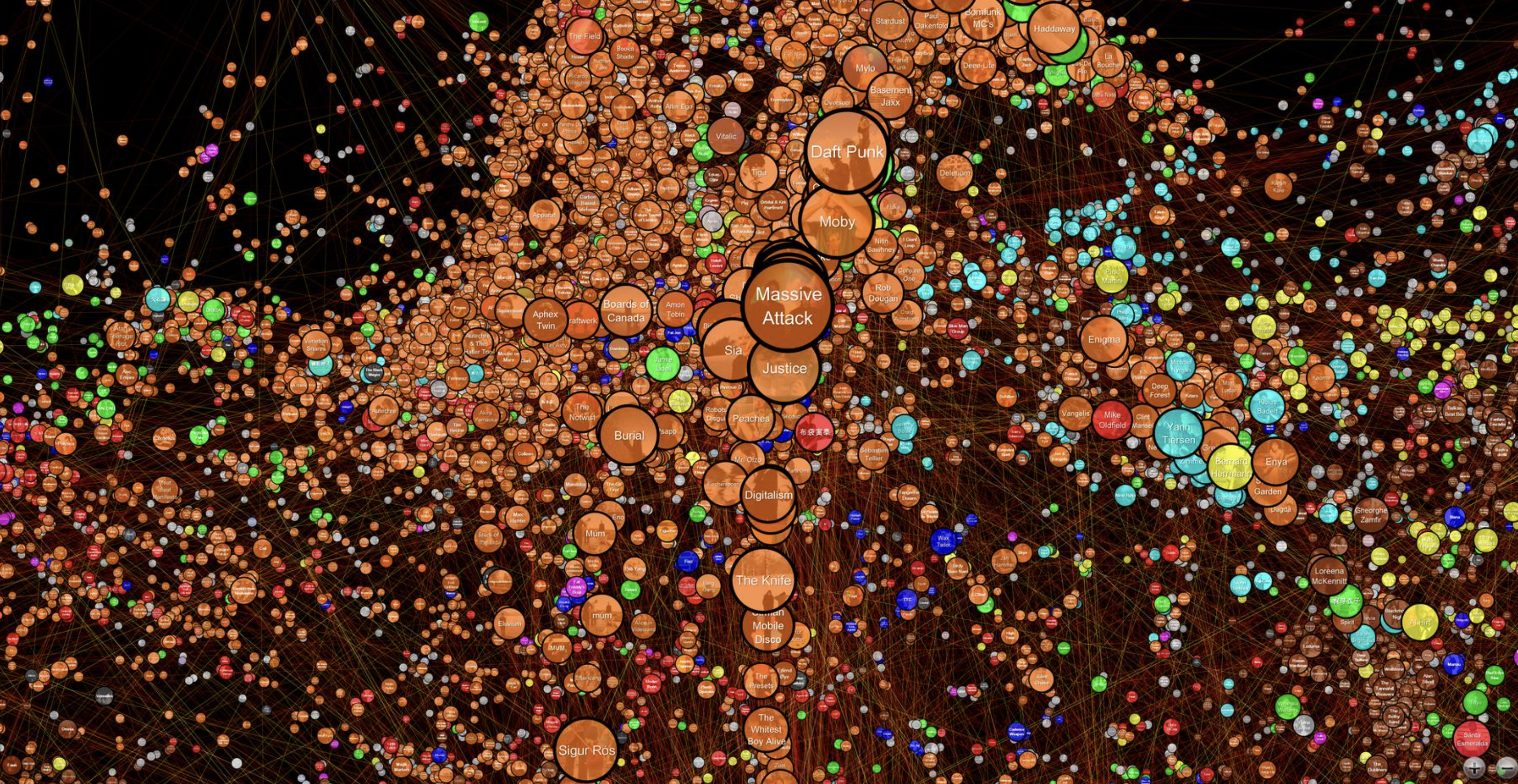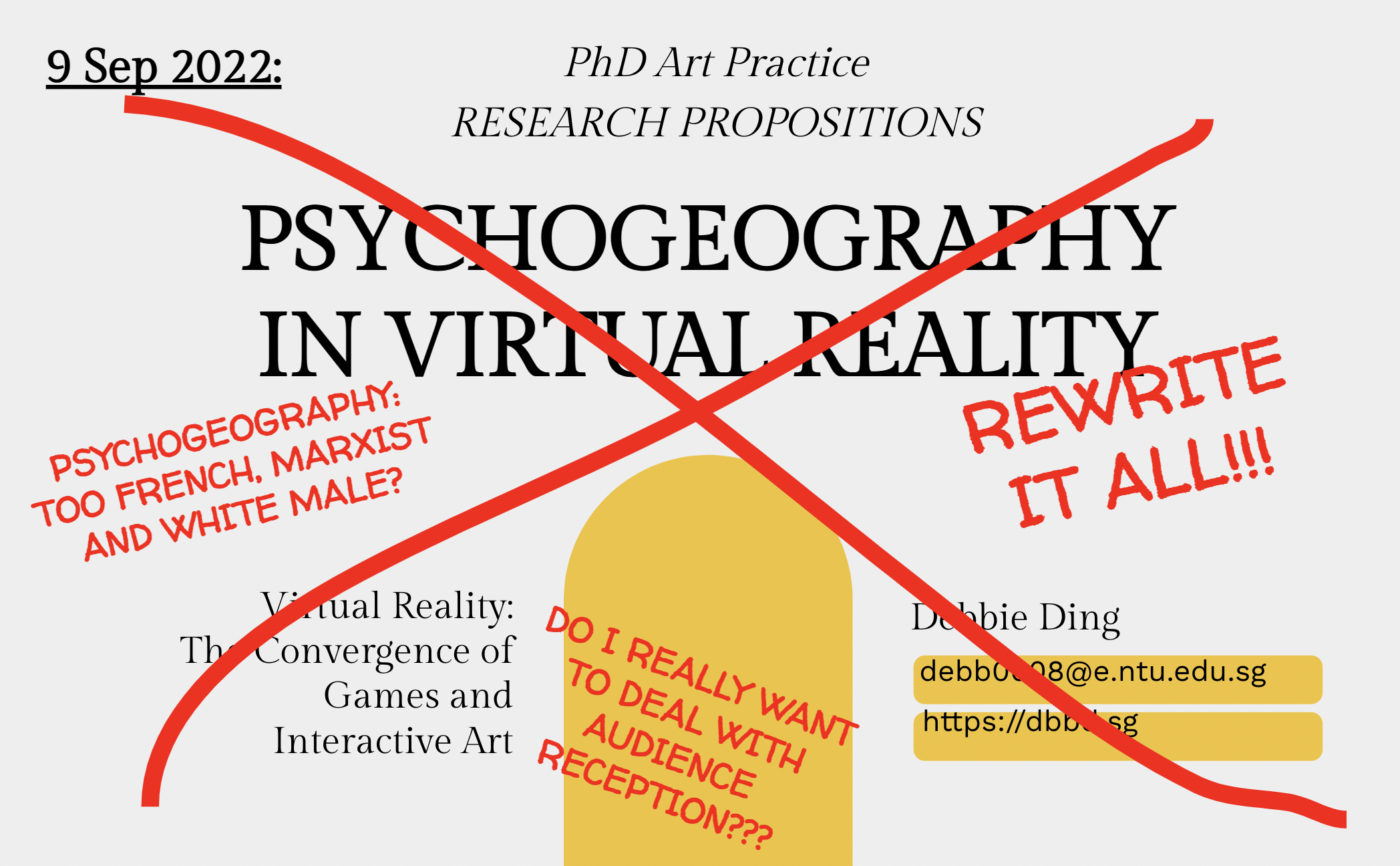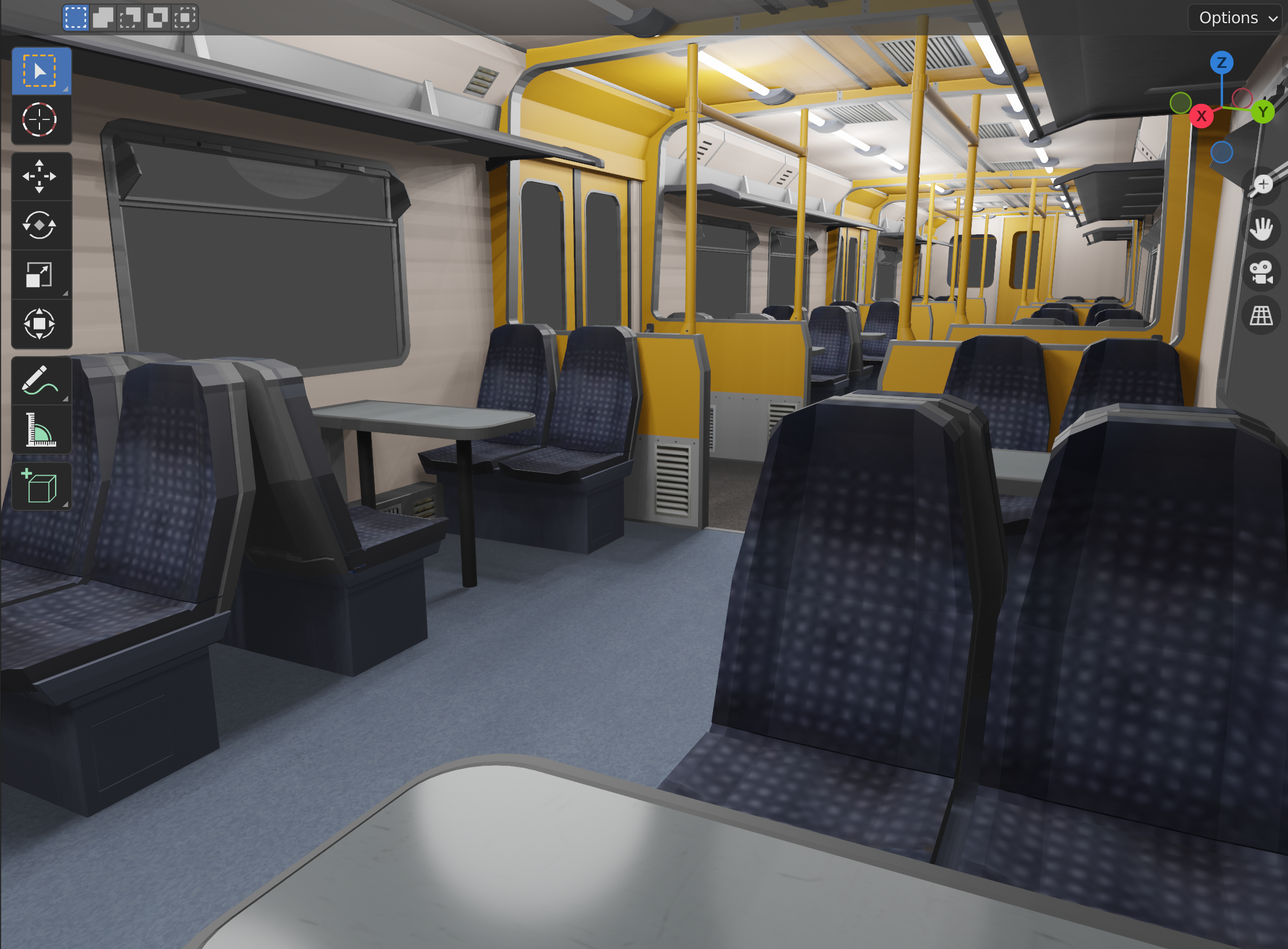
Behind-the-scenes of The Commuter: Realism, texturing, and baking
debbie ding
- 0
- 151
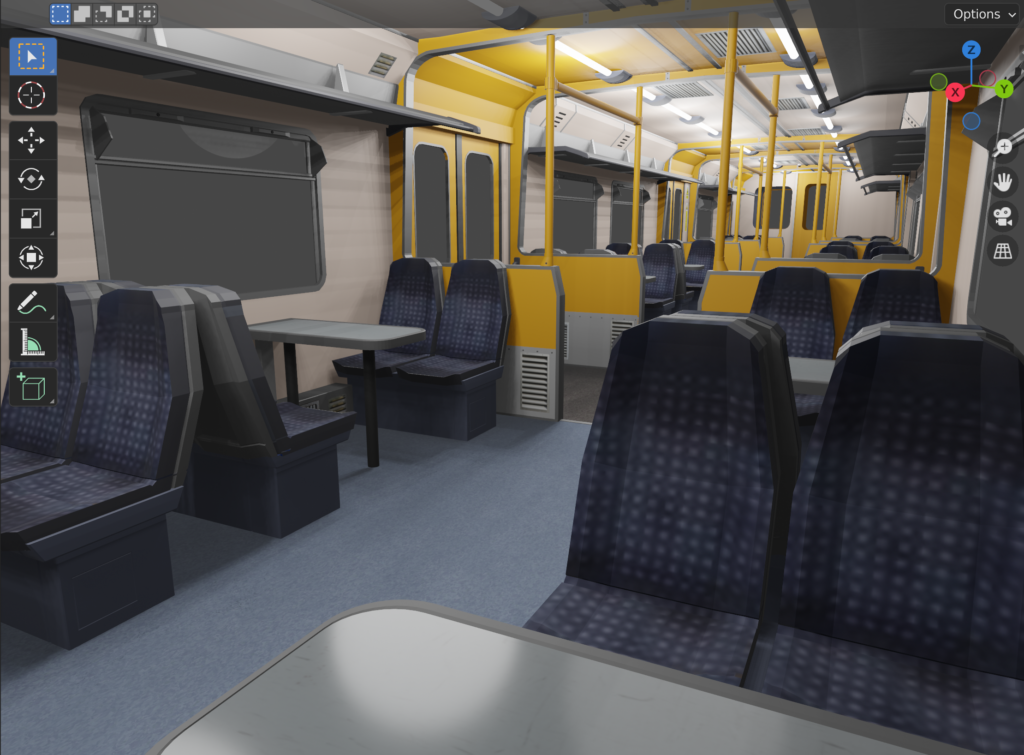
What’s a practice-based PhD without a healthy amount of PRACTICE? Here are some behind the scenes shots for something I am currently working on in VRChat.
A big question on my mind lately is: How Real does the Virtual Reality have to be? The detail has to be there, because it is used to allude to the vastness of the world we are in. We’re also in a time when photorealism is possible, although it does require a lot of work. Without some underpinnings of authenticity and time, the illusion of the uncanny just does not work. Instead of making something floating in space, I am increasingly feeling that I should attempt to ground it through some glimpses from our reality. In VR we could go anywhere, but we don’t just want to go “anywhere” we want to go “somewhere“.
Earlier this year I’ve been experimenting with toony and cel shaders in Unity and I have worked out a solid and reliable method for applying these for mobile builds in VR. Which is okay if I wanted to make a super toony coloured world that performs excellently on mobile. Here’s an example of my toony shader worlds:

Right after I built this prototype, I happened to go on the VRChat Safari with Cade and Aemeth (more on that in the next post) and we toured some very detailed and “luxuriously” built virtual worlds. It reminded me that I could also try to aim for the uncanny. Uncanny realism is fairly easy for me to achieve this in Blender, so with the exact same 3D model you see which I built above, I retextured and relighted it entirely in Blender to look exactly like the real Class 313 train from Moorgate to Herts Loop.
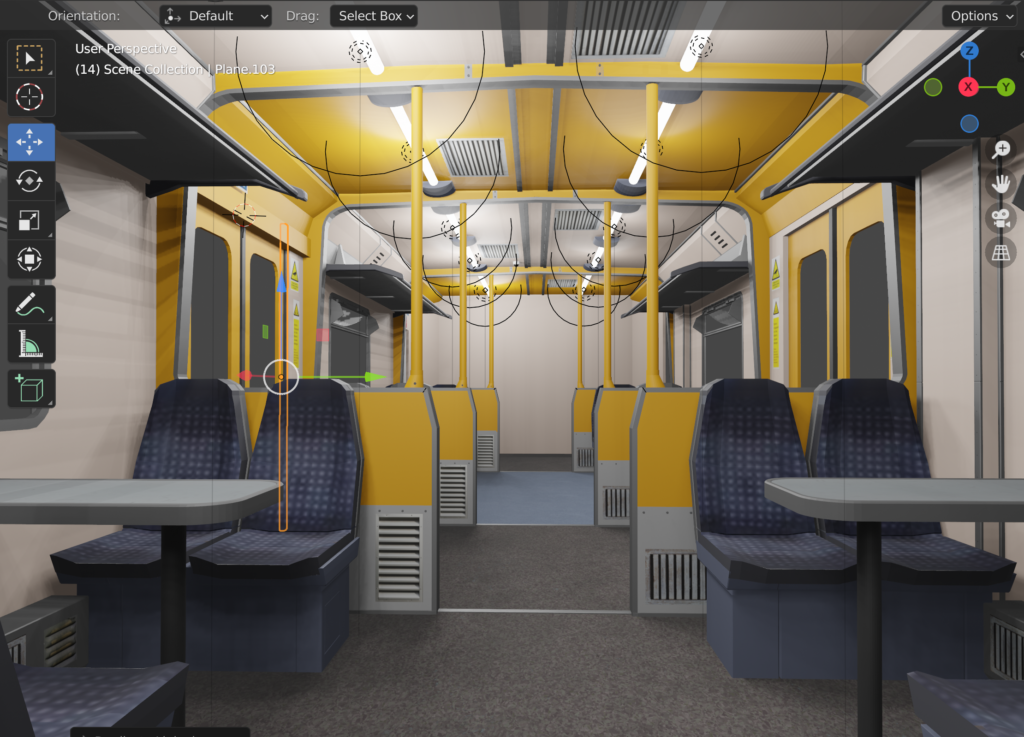
Starting to look pretty real eh, especially with the rendered lighting in the right place, and a few well placed vents? Now if this could be the final product that I simply put into the game engine, then we’d be done here, but of course its not so easy.
Once I put my 3D model into Unity, a lot of things happened to it. First there were some unexpected gamma colour space conversions, so I had to recreate a couple materials. And then, I had to adjust ALL the lights all over again. This isn’t my strong suit and I should probably do a few more tutorials on lighting and baking so this isn’t so much of trial and error every time.
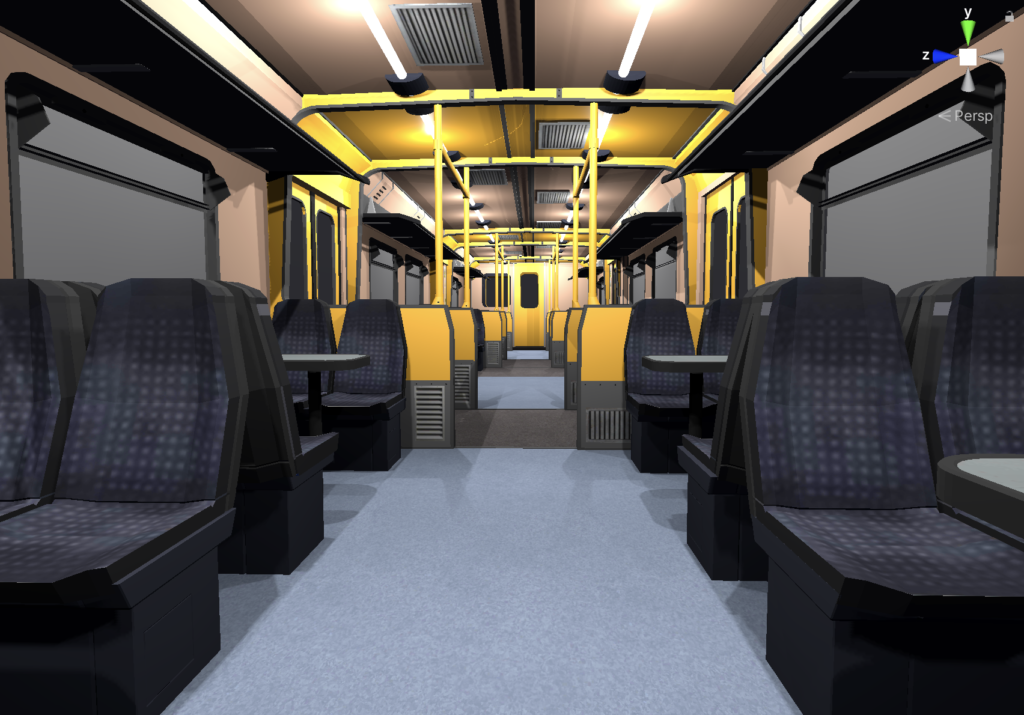
Again, if realtime lighting worked on mobile, this overall scene would be done, but NO. I HAVE TO BAKE the lights. I actually have bought Bakery and have used it on a PC but… it doesn’t run on my Macbook Pro which I am somehow stubbornly insisting on using as my main machine for development work. 13 minutes later, some very bizarre looking shadows have baked in my Mac.
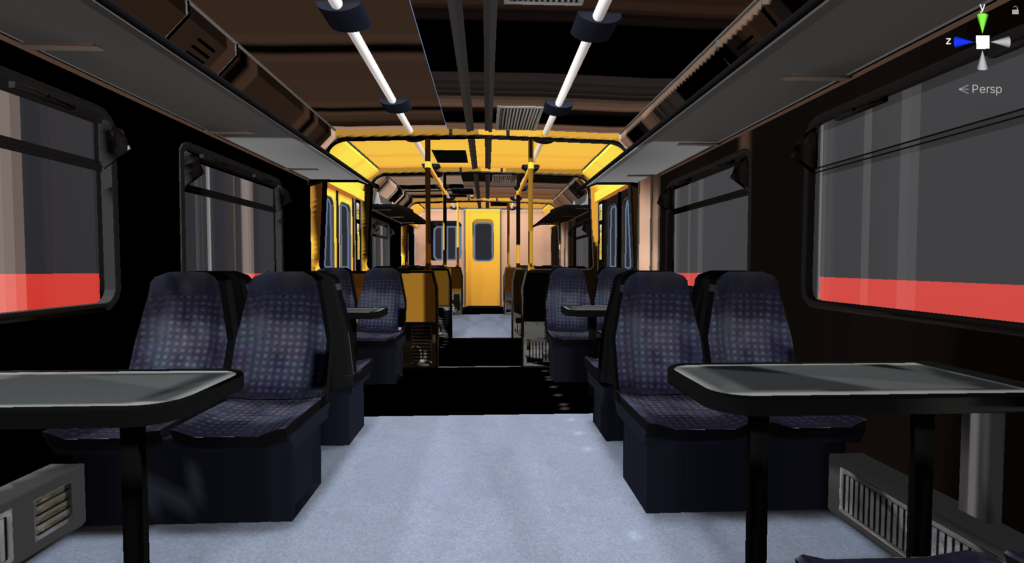
Help! Its becoming darker and darker! And there appear to be quite a lot of unexpected artefacts baked in. I’m not sure if it is because I insisted on using an Apple Silicon Mac to bake the lights. I had hoped that I could use the new M1 Macbook Pros to do the development work since its so powerful. But I suppose that next I will attempt to bake it again on the PC and tweak the lighting all over again. I’d love to hear from 3D People! what are your own recommended workflows for baking?
Pluritopia Biennale is this Thursday 22 Sept 2022 on VRChat!
Come visit the world of The Commuter and other artist-created worlds!
